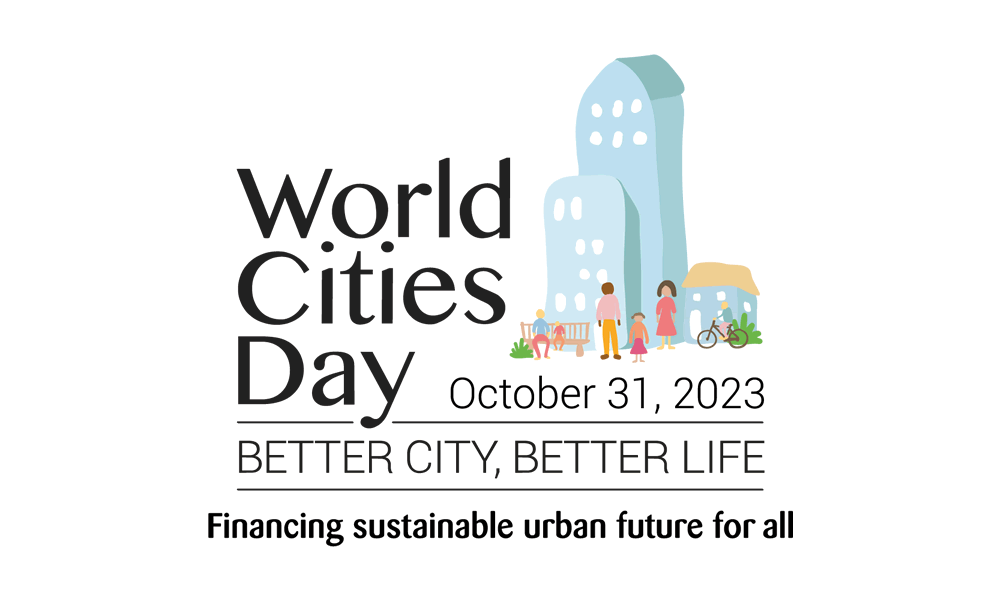« May 2017 | Main | July 2017 »
June 21, 2017
Conversation on Yoga for Health
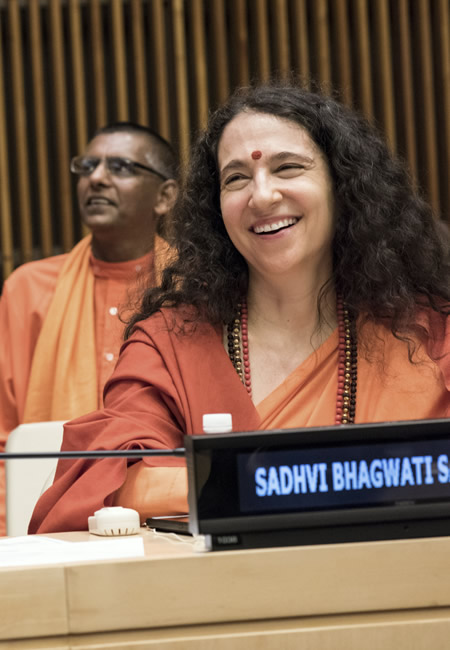
Photo: A scene from an event entitled “Conversation on Yoga for Health”, on the occasion of the International Day of Yoga. The event was co-organized by the Permanent Mission of India, the World Health Organization (WHO), and the UN Department of Public Information. Nata Menabde, Executive Director of the WHO Office at the UN, offered opening remarks. 21 June 2017. United Nations, New York. UN Photo/Kim Haughton.
|GlobalGiants.Com|







Edited & Posted by the Editor | 9:00 PM | View the original post
June 14, 2017
Harvard is World's Most Prestigious University
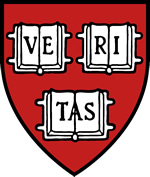
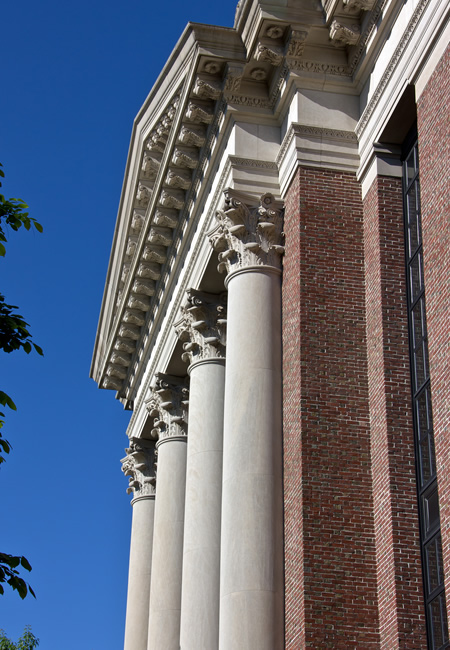
Photo: Section of a building at Harvard Yard, Harvard University, Cambridge, Massachusetts, USA. Image Credit: Andreas Metz.
Times Higher Education (THE) has just announced the results of its World Reputation Rankings 2017. These rankings are based on the world’s largest invitation-only academic opinion survey to provide the definitive list of the top 100 most powerful global university brands.
Harvard University tops this year’s list of the world’s most prestigious universities, and it does that for the seventh year in a row.
But, while North America continues to dominate the table, several of the region’s most reputable institutions have been outshone by leading Asian brands for the first time. China’s Tsinghua University and Peking University both leapfrogged the University of Pennsylvania and Cornell University in the table this year while the University of Tokyo now has a stronger reputation than Columbia University. Meanwhile, Seoul National University is now considered more prestigious than the University of California, Davis.
Leading universities in Belgium, Germany, France and the Netherlands have also lost ground as universities in Asia have become more prominent brands on the global stage.
Overall, 19 countries across Europe, Australasia, Asia, North America and Latin America are represented in the seventh annual edition of the table.
World’s Most Prestigious Universities 2017
Top 50
Rank - Institution - Location - Overall Score
- Harvard University — United States — 100.0
- Massachusetts Institute of Technology — United States — 80.2
- Stanford University — United States — 76.2
- University of Cambridge — United Kingdom — 69.1
- University of Oxford — United Kingdom — 69.1
- University of California, Berkeley — United States — 60.3
- Princeton University — United States — 38.5
- Yale University — United States — 35.8
- University of Chicago — United States — 27.2
- California Institute of Technology — United States — 26.0
- University of Tokyo — Japan — 25.7
- Columbia University — United States — 24.3
- University of California, Los Angeles — United States — 22.6
- Tsinghua University — China — 20.1
- University of Michigan — United States — 18.5
- University College London — United Kingdom — 17.3
- Peking University — China — 17.2
- Imperial College London — United Kingdom — 17.1
- University of Pennsylvania — United States — 17.0
- London School of Economics and Political Science — United Kingdom — 16.7
- Johns Hopkins University — United States — 16.6
- ETH Zurich - Swiss Federal Institute of Technology — Switzerland — 16.3
- Cornell University — United States — 15.5
- University of Toronto — Canada — 15.4
- Kyoto University — Japan — 13.4
- New York University — United States — 13.4
- National University of Singapore — Singapore — 13.0
- Duke University — United States — 11.5
- University of California, San Diego — United States — 9.8
- Lomonosov Moscow State University — Russian Federation — 9.4
- Northwestern University — United States — 9.2
- University of Texas at Austin — United States — 9.1
- University of Wisconsin-Madison — United States — 9.1
- University of Edinburgh — United Kingdom — 8.7
- University of Washington — United States — 8.7
- University of Illinois at Urbana-Champaign — United States — 8.6
- Carnegie Mellon University — United States — 8.4
- Paris Sciences et Lettres - PSL Research University Paris — France — 7.9
- University of Hong Kong — Hong Kong — 7.6
- University of British Columbia — Canada — 7.5
- King’s College London — United Kingdom — 7.2
- University of California, San Francisco — United States — 6.9
- LMU Munich — Germany — 6.9
- McGill University — Canada — 6.9
- Ecole Polytechnique Féderale de Lausanne — Switzerland — 6.8
- University of Melbourne — Australia — 6.6
- Seoul National University — South Korea — 6.6
- Georgia Institute of Technology — United States — 6.1
- University of California, Davis — United States — 6.0
- University of North Carolina at Chapel Hill — United States — 5.8
51-60
- University of Amsterdam — Netherlands
- Delft University of Technology — Netherlands
- Heidelberg University — Germany
- Humboldt University of Berlin — Germany
- Karolinska Institute — Sweden
- University of Manchester — United Kingdom
- University of Minnesota — United States
- National Taiwan University — Taiwan
- Osaka University — Japan
- Purdue University — United States
- Zhejiang University — China
61-70
- Australian National University — Australia
- Brown University — United States
- University of California, Santa Barbara — United States
- Free University of Berlin — Germany
- Ohio State University — United States
- Pennsylvania State University — United States
- University of Sydney — Australia
- Technical University of Munich — Germany
- Tohoku University — Japan
71-80
- Chinese University of Hong Kong — Hong Kong
- Fudan University — China
- Hong Kong University of Science and Technology — Hong Kong
- KU Leuven — Belgium
- University of Maryland, College Park — United States
- Michigan State University — United States
- Pantheon-Sorbonne University - Paris 1 — France
- Shanghai Jiao Tong University — China
- University of Southern California — United States
- Tokyo Institute of Technology — Japan
- Washington University in St Louis — United States
81-90
- Boston University — United States
- University of Copenhagen — Denmark
- University of Florida — United States
- Korea Advanced Institute of Science and Technology — South Korea
- Leiden University — Netherlands
- Nanyang Technological University, Singapore — Singapore
- Sungkyunkwan University (SKKU) — South Korea
- Utrecht University — Netherlands
- University of Warwick — United Kingdom
91-100
- University of Arizona — United States
- Durham University — United Kingdom
- Indiana University — United States
- Lund University — Sweden
- Nagoya University — Japan
- Nanjing University — China
- Paris-Sorbonne University - Paris 4 — France
- RWTH Aachen University — Germany
- University of Sao Paulo — Brazil
- Texas A&M University — United States
- University of Zurich — Switzerland
Reputation ranking is not academic ranking. Rather, as Times Higher Education explains, it lists the world’s top 100 universities based purely on their prestige.
THE’s World Reputation Rankings are based on an annual invitation only Academic Reputation Survey. According to THE, this year, the survey received responses from more than 10,500 scholars across 137 countries. Each of these academics represented his country as well as his peers in his field of expertise. The survey had asked experienced, published academics to outline which universities they perceived to be the best for teaching and research in their specialist discipline.
As higher education becomes more international and more competitive, the universities that are succeeding are the institutions that have made their reputation central to their strategy. A good reputation attracts talent, investment and partnerships.
National governments accept that universities now form an essential component of their country’s soft power. For university leaders, donors, partners, faculty and students, the reputation of their institution is the foundation that strengthens and drives their decision making, and highlights the value they place on the university’s research and teaching.
The ESSENCE of our following opinion, expressed in 2015, still holds good.
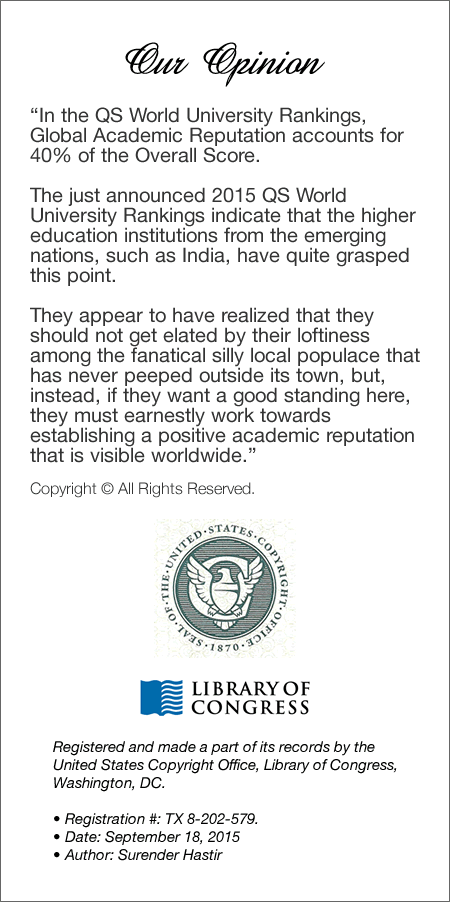
|GlobalGiants.Com|







Edited & Posted by the Editor | 1:30 PM | View the original post
June 12, 2017
World Oceans Day celebrated at UN Headquarters

Photo: Stilt dancers, musicians, and ritual processions came together at the UN Visitors’ Plaza in a new performance piece entitled “Ocean Calling” to mark World Oceans Day (June 8). The marine-centric work was created by artist Laura Anderson Barbata in collaboration with choreographer Chris Walker, The Brooklyn Jumbies, choreographer and dancer Mei Yamanaka, and Jarana Beat. The event was organized by the Office of the President of the General Assembly with TBA21-Academy. 08 June 2017. United Nations, New York. UN Photo/Manuel Elias.

Photo: The Ocean Conference opens with a Fijian traditional welcome ceremony. The UN Ocean Conference took place at UN headquarters in New York from 5 to 9 June 2017, coinciding with World Oceans Day (8 June). Co-chaired by Fiji and Sweden, the Conference aimed to support the implementation of Sustainable Development Goal 14: Conserve and sustainably use the oceans, seas and marine resources for sustainable development. 05 June 2017. United Nations, New York. UN Photo/Mark Garten.
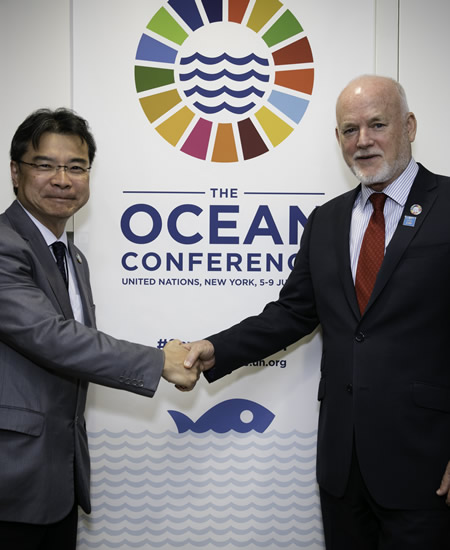
Photo: Peter Thomson (right), President of the seventy-first session of the UN General Assembly, meets with Yoshioka Tatsuya, Co-founder and Director of Peace Boat, on the margins of the 5-9 June Ocean Conference. 07 June 2017. United Nations, New York. UN Photo/Ariana Lindquist.
|GlobalGiants.Com|







Edited & Posted by the Editor | 12:57 PM | View the original post
June 8, 2017
QS World University Rankings 2018: MIT Named World's Best University for Record Sixth Year
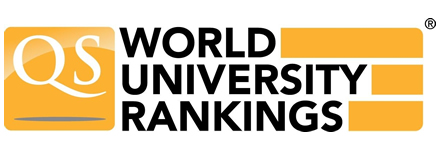
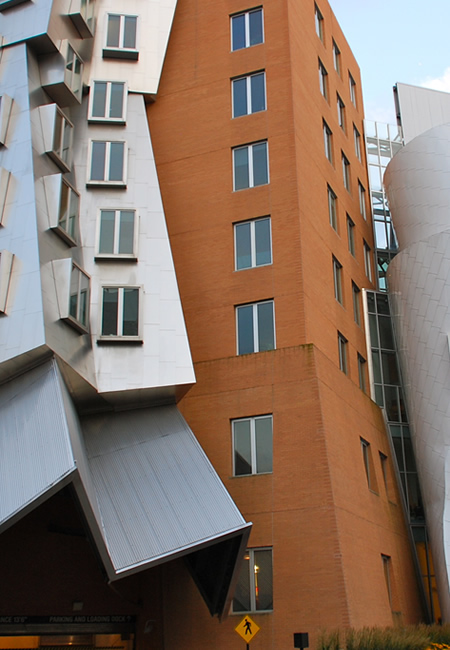
Photo: A section of the Stata Center building, Massachusetts Institute of Technology (MIT), Cambridge, MA, USA. Image Credit: Adam Fagen.
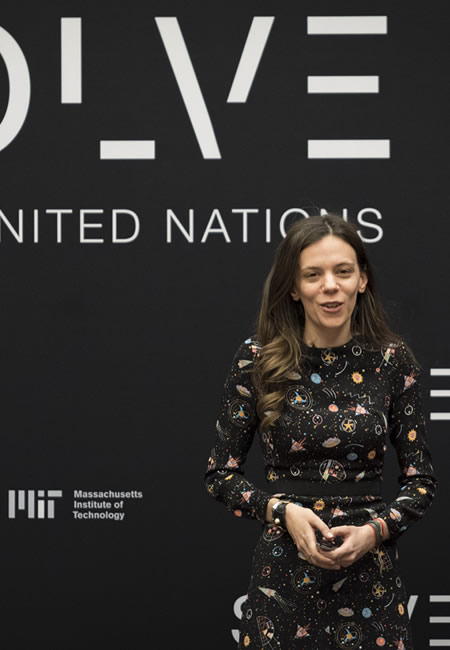
Photo: Alexandra Amouyel, Executive Director of Solve at Massachusetts Institute of Technology (MIT), during the recent “Solve at the United Nations” event. Solve is an MIT initiative “connecting innovators with resources to solve global challenges”. United Nations, New York. UN Photo/Mark Garten.
LONDON, June 7, 2017 — QS Quacquarelli Symonds, higher education experts, have released the 14th annual QS World University Rankings.
Massachusetts Institute of Technology (MIT) is the world’s leading university for a record sixth consecutive year. 959 universities are ranked.
Ben Sowter, Research Director, QS, said: “MIT is the nucleus of an unrivalled innovation ecosystem. Companies created by its alumni enjoyed combined revenues of $2 trillion, making them the equivalent of the world’s 11th largest economy.”
QS World University Rankings 2018: Top 20
- MASSACHUSETTS INSTITUTE OF TECHNOLOGY (MIT) US
- STANFORD UNIVERSITY US
- HARVARD UNIVERSITY US
- CALIFORNIA INSTITUTE OF TECHNOLOGY (CALTECH) US
- UNIVERSITY OF CAMBRIDGE UK
- UNIVERSITY OF OXFORD UK
- UCL (UNIVERSITY COLLEGE LONDON) UK
- IMPERIAL COLLEGE LONDON UK
- UNIVERSITY OF CHICAGO US
- ETH ZURICH CH
- NANYANG TECHNOLOGICAL UNIVERSITY (NTU) SG
- ECOLE POLYTECHNIQUE FEDERALE DE LAUSANNE (EPFL) CH
- PRINCETON UNIVERSITY US
- CORNELL UNIVERSITY US
- NATIONAL UNIVERSITY OF SINGAPORE (NUS) SG
- YALE UNIVERSITY US
- JOHNS HOPKINS UNIVERSITY US
- COLUMBIA UNIVERSITY US
- UNIVERSITY OF PENNSYLVANIA US
- AUSTRALIAN NATIONAL UNIVERSITY (ANU) AU


PRESIDENT OF INDIA RECEIVES 2018 EDITION OF THE QS WORLD UNIVERSITY RANKINGS
New Delhi, Rashtrapati Bhavan:
The President of India, Shri Pranab Mukherjee received the 2018 edition of the QS World University Rankings brought out by the Education Promotion Society of India (EPSI) at a function held at Rashtrapati Bhavan.
Speaking on the occasion, the President said that he was happy to find three Indian institutions - IIT Delhi and IISc Bangalore, which were already in the top 200, and the latest entrant IIT Bombay securing ranks within the coveted top 200 and IISc Bangalore being now ranked 6th globally for Citations per Faculty.
The President said that while in terms of infrastructure there has been considerable expansion in the higher education sector, quality of education in many institutes remains a matter of concern. In ancient times, we had renowned seats of higher learning - Nalanda, Takshashila, Vikramashila, Valabhi, Somapura and Odantapuri - that dominated the world higher education system for eighteen hundred years beginning sixth century BC. Scholars from round the globe flocked to these centres of learning in search of knowledge. A reverse scenario exists today. Many meritorious Indian students pursue their higher studies from foreign universities. Our higher learning institutions are capable of producing world-class scholars but lose them to foreign universities.
The President said that during his visits to the universities in his capacity as Visitor to Central Intuitions of Higher Learning, he had been sharing his concerns about the performance of Indian institutions in world university rankings. A high rank can boost the morale of the academic and student communities, open greater avenues of growth and placement for students, help attract the best faculty from across the world, and provide a benchmark for continuous quality enhancement.
|GlobalGiants.Com|







Edited & Posted by the Editor | 3:36 AM | View the original post


